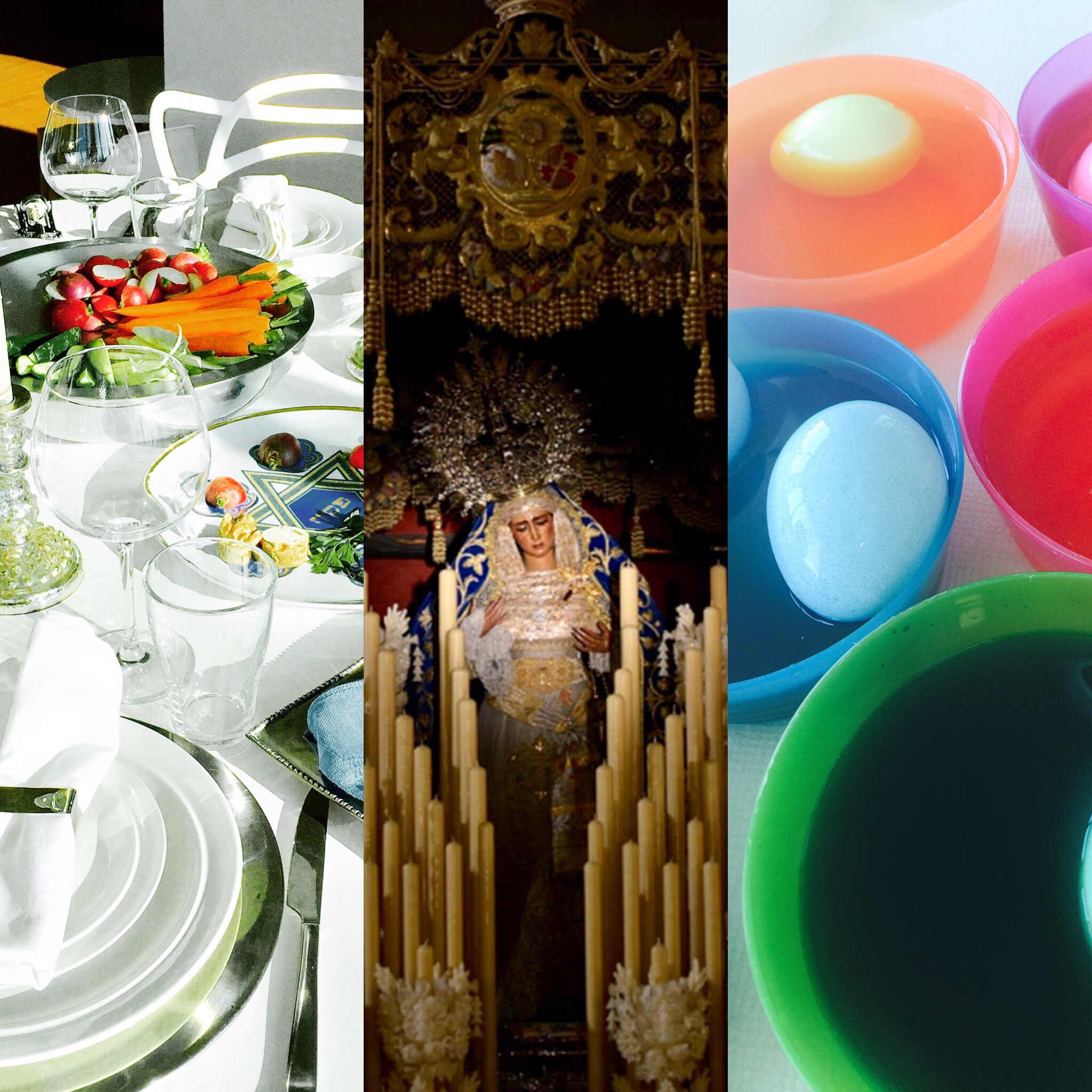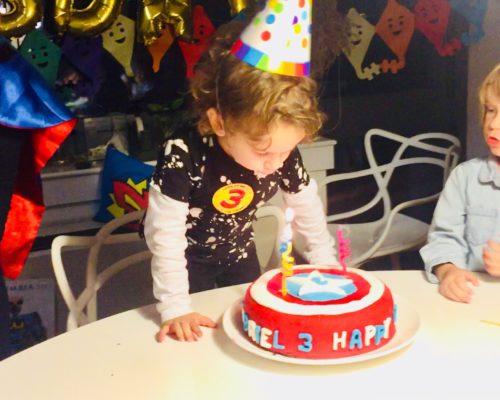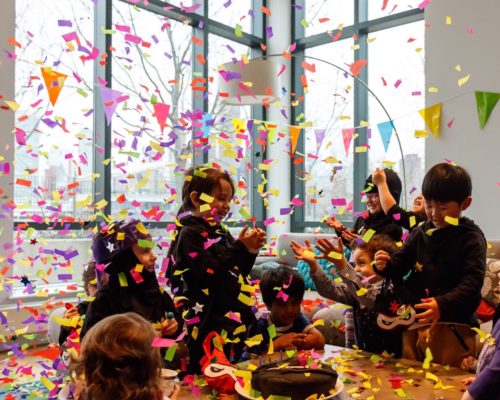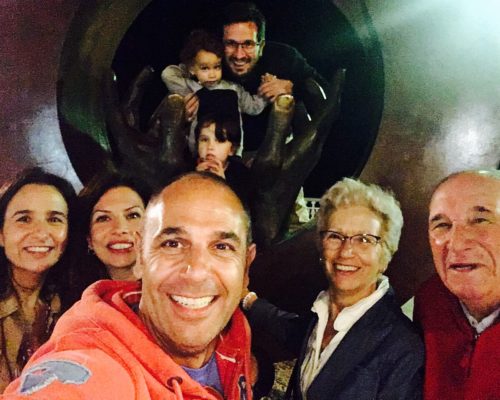We are Bi
Yep!! We are a proud “bi” family. And we’d like to encourage everybody from a mixed family to follow a similar lifestyle. So far we are bilingual, binational and bireligious, and hope one day to become multilingual, multinational and multireligious! I am from Spain, Spanish is my mother tongue and I was raised Roman Catholic. My husband is American, English is his first language and he is Jewish. So we are working on getting dual citizenship for everybody in the family (my husband’s may take a bit longer but still trying), we all work hard on maintaining both Spanish and American national and socio-cultural identities, we foster and encourage a bilingual education and environment at home, and we celebrate, embrace and take pride on adopting both Catholic and Jewish traditions.
First of all, let me just say that not everybody in our extended families understand or approve of our dual religion lifestyle… it’s funny because all the other dualities in our family seem to be perfectly acceptable to them but for some reason, the dual religion choice seems to trigger very particular negative responses. I actually have been accused of proselytizing my children (whatever…!) and as a result I have had to witness these unaccepting family members trying to undermine and disrespect the religion that wasn’t their own (not cool… just not cool!!). I wonder why is the religion matter such a hair raising issue?? After all, and in particular with all Abrahamic religions, aren’t the theological and original moral teachings of all three EXACTLY the same? Can’t we all agree that all the main “heroes” (to use a Joseph Campbell term which I’m using liberally to group Moses, Jesus and Mohamed) of these religions are pretty amazing, laudable and respectable beings, regardless of whether they were of divine or human nature? It is clear that the rituals and traditions that nowadays define each of our religious’ affiliations are derived from ancient, locally sourced, anachronistic uses. But they nonetheless carry a lot of beauty, history, culture, folklore, mythology and wisdom and they all share of common purpose of bringing families and communities together. So in our family we have decided to respect and learn from all religions and traditions; embrace, adopt and celebrate those we are most familiar with and form part of our personal history and upbringing; and never undermine, disrespect or disregard any religion or tradition or feel threatened by it.
My response to those that do not accept our decision in this regard is: “we are a family founded on the richness of diversity… the more you get on with our believe of respect, tolerance and appreciation the closer we’ll be to each other and the more we will enjoy good times together”
So, for example, this last week we celebrated Passover and Easter and it was a blast! Passover was held at my husband’s long time friend’s house and it was really fun. I have hosted Passover Seders before and I absolutely love diving into the culinary traditions, the symbolic meanings, the songs, readings and history of the ritual. I find it can be tedious or fun depending on the general vibe of the people attending but with kids I’ve certainly never experienced a boring one! First of all, the symbolism of the Seder is just so much fun to explain to little ones, the songs are fun and catchy, the story is fascinating and very exciting and to top it all off, when the children participate by asking the Four Questions and finding the Afikoman the whole ritual turns into a lovely family friendly event! It is hard sometimes to make the children abide by the solemnity and respect we owe to the Seder tradition, but when you are in awe at how incredibly it is that all Jews follow the same ritual all over the world, that the same words, symbols and order have been perfomed for millennia and that it is a celebration to the wonderful history and unique character of the Jewish people, your sense of reverence transpires and somehow children get infused with it. Plus they get to play the “find the Afikoman” game!! I mean… how fun is that!!??
So, for those of you not introduced yet to the Jewish Passover tradition let me do a quick (and probably too simplistic) explanation on what a Passover Seder is all about. Seder means order and it is called that way because it is a ritual in which the order on how we do things prior to dinner matters (washing hands, saying prayers, drinking wine…etc). During Passover we remember and honor the historic time of the Jews’ scape from Egypt. The Jewish people were enslaved and oppressed by Egypt’s Pharaoh, so they decided to rebel and escape. God helped the Jewish People escape from Egypt by inflicting ten plagues upon the ancient Egyptians; the tenth and worst of the plagues was the death of the Egyptians first-born. The Jews were instructed to mark their doors with sacrificial lambs’ blood so God would not kill their firstborns. Hence the term Passover. During the ritual, everybody gathered reads the story in remembrance, and also the explanation on why the ritual is done and followed in a particular manner. So it is kind of a self explanatory celebration, which is in itself, I believe, pretty cool. During Passover we eat unleavened bread in commemoration of the fact that the Jews left in such a hurry that there was no time for the bread to rise. This unleavened bread is called Matzoh and it’s delicious! There is a lot of symbolism and ritual in the Passover Seder celebration and I encourage all of you to read about it a bit more (just enough to kick start your curiosity) by looking up Passover and Seder Plate in Wikipedia.
Right around Passover we also celebrate Easter or Semana Santa. Now, for me a typical Semana Santa celebration such as those I’m used to while growing up in Spain is substantially different from the Easter celebrations that take place in the US… but since we are bicultural we’ll take them both! (See my point?)
Semana Santa in Spain is literally the most intense and rich Semana Santa in the world. First of all, it is a wonderful vacation period when pretty much everybody takes advantage of the holiday to take off and travel somewhere around the country to enjoy either the first rays of sun at the beach, visit family at the pueblo or go check out a particular picturesque town. The week’s celebrations are marked by the beautiful processions and imagery around each one of the main celebrations: it starts with Domingo de Ramos where it is common to make some beautifully ornamented crafts with dried palm leaves for the children to carry on procession (the adults’ ones tend to be simpler and more somber) after mass. Then, depending on the town or village you can enjoy processions in Jueves Santo (at night, to commemorate the Last Supper and the treason of Judas) which are really dramatic and dark, Viernes Santo (which are also very vivid and marked by the Doce Pasos or stages that Jesus suffered in his way to El Calvario), and then the procession of Domingo de Resurrección which is joyous and glorious and celebrates the resurrection of Jesus. My memories of Semana Santa in Spain are marked by fun vacation time, tons of time to play and enjoy my family and witnessing and participating in beautiful, incredibly touching, goosebump inducing, mystical processions and Holy Masses. There is really no Semana Santa in the world like Spain’s, and I absolutel urge you to visit and experience it by yourselves.
The most famous processions in Spain during Semana Santa are:
Procesión del Cristo de los Gitanos de Granada: takes place on Wednesday night with lots of amazing saetas sang on the way.
Procesión de Los Legionarios de Málaga: on Thursday night the legion carries the image of Jesus on their shoulders while singing their hymn “el novio de la muerte”.
La Madrugá del Viernes Santo en Sevilla: Friday morning before dawn a dramatic procession takes place in Seville with people demonstrating their fervor for the most iconic figures in the Passion of the Christ.
La procesión de las Turbas de Cuenca: in Cuenca during the early morning of Friday the cofradías play very loud trumpets and clarinets to be suddenly stopped when the Image of Virgin Mary makes its appearance causing a deafening silence.
Procesión del Cristo de Medinaceli de Madrid: on Friday night the image of Christ leaves the Capilla del Cristo de Medinaceli in a tumultuous procession through the center of Madrid.
These processions are beautiful rituals with incredibly elaborate imagery, centuries old history and heartfelt mysticism. And they always come hand in hand with copious and delicious family dinners, traditional sweets (like torrijas and pestiños) and fun vacation times. Many are solemn and somber but they are an amazing reflection of the passion that defines the Spanish people: we love, laugh, suffer and cry with all our hearts and souls!
Given the fact that this year we were not in Spain for Semana Santa, I decided (since it is hard for me to set up a cofradía and procession on my own… hahaha!) to focus the celebration on the American tradition of Easter, including egg painting and Egg Hunt activities. When I first arrived in the US I was quite puzzled by the Easter Rabbit but I have learned since that it is a celebration of spring, new life and fertility. I’m certainly in for honoring that!
We took on the activities with enthusiasm and while there were a couple of casualties along the way, I think the children did a magnificent job! Some people use hard boiled eggs but since we are a hungry family we make sure nothing goes to waste. When we paint the eggs we empty them first by making a small orifice at the top and bottom of the shell and blowing through it, so the egg yolk and white comes out leaving the egg shell practically untouched. Side note: I make obscene amounts of tortilla española with all the eggs we use for painting. Then, depending on the patience of the children we either prepare natural dyes by boiling cabbage, beets, onion skins and using turmeric or spinach juice in which to dip the eggs for at least 24 hours or we go to the drug store and buy a packet of synthetic egg dye. Either method works although I tend to prefer the hues of the natural dyes while my children favor the instant reward of synthetic dyes. In any event we then proceed to make our own decorations by painting over the eggs with markers and stickers. My children love this craft so much that during any season they ask me to spare the egg shells when I’m using them for culinary purposes so they can paint faces on them, glue cotton balls or yarn as hair, etc. It really is fun!
We started painting the eggs on Thursday and I believe we have had about 34 egg hunts since! My children totally love the challenge and I usually mix in the hunt a couple of plastic eggs in which a insert a Peep, so they can get their little reward for searching hard. Now, when I say searching hard, I mean HARD! I don’t mess around, this is a real hide and seek game and I make sure to really hide the eggs in the most inconspicuous of places… and they go craaaazy for it! The whole thing is a riot!
I find it fascinating and a fun coincidence the fact that both the Jewish Seder and the Easter celebration include hide and seek games for the children… these elders figured out a way to have them involved and engaged while commemorating two particularly solemn and sometimes gruesome events in their traditions. Isn’t that clever? Our elders knew how to market to the young audiences!! Another example of how we all, regardless of religious affiliation, share a common purpose to honor tradition, create family friendly rituals and slow down and create good memories together. Let’s celebrate them all!












